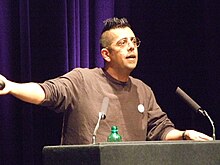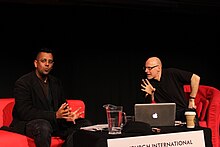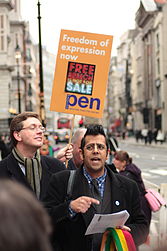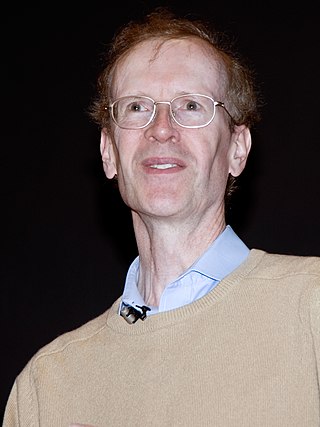
Sir Andrew John Wiles is an English mathematician and a Royal Society Research Professor at the University of Oxford, specialising in number theory. He is best known for proving Fermat's Last Theorem, for which he was awarded the 2016 Abel Prize and the 2017 Copley Medal and for which he was appointed a Knight Commander of the Order of the British Empire in 2000. In 2018, Wiles was appointed the first Regius Professor of Mathematics at Oxford. Wiles is also a 1997 MacArthur Fellow.

Chiropractic is a form of alternative medicine concerned with the diagnosis, treatment and prevention of mechanical disorders of the musculoskeletal system, especially of the spine. It has esoteric origins and is based on several pseudoscientific ideas.
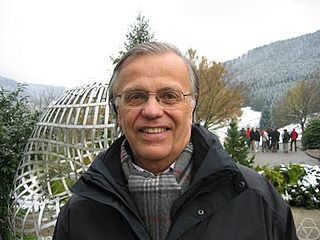
Gerhard Frey is a German mathematician, known for his work in number theory. Following an original idea of Hellegouarch, he developed the notion of Frey–Hellegouarch curves, a construction of an elliptic curve from a purported solution to the Fermat equation, that is central to Wiles's proof of Fermat's Last Theorem.

Edzard Ernst is a retired British-German academic physician and researcher specializing in the study of complementary and alternative medicine. He was Professor of Complementary Medicine at the University of Exeter, the world's first such academic position in complementary and alternative medicine.

The history of chiropractic began in 1895 when Daniel David Palmer of Iowa performed the first chiropractic adjustment on a partially deaf janitor, Harvey Lillard.While Lillard was working without his shirt on in Palmer's office, Lillard bent over to empty the trash can. Palmer noticed that Lillard had a vertebra out of position. He asked Lillard what happened, and Lillard replied, "I moved the wrong way, and I heard a 'pop' in my back, and that's when I lost my hearing." Palmer, who was also involved in many other natural healing philosophies, had Lillard lie face down on the floor and proceeded with the adjustment. The next day, Lillard told Palmer, "I can hear that rackets on the streets." This experience led Palmer to open a school of chiropractic two years later. Rev. Samuel H. Weed coined the word "chiropractic" by combining the Greek words cheiro (hand) and praktikos.

Paul Friedrich Wolfskehl, was a physician with an interest in mathematics. He bequeathed 100,000 marks to the first person to prove Fermat's Last Theorem.

Sense about Science is a United Kingdom charitable organization that promotes the public understanding of science. Sense about Science was founded in 2002 by Lord Taverne, Bridget Ogilvie and others to promote respect for scientific evidence and good science. It was established as a charitable trust in 2003, with 14 trustees, an advisory council and a small office staff. Tracey Brown has been the director since 2002.
The problem in number theory known as "Fermat's Last Theorem" has repeatedly received attention in fiction and popular culture. It was proved by Andrew Wiles in 1994.
Throughout its history, chiropractic has been the subject of internal and external controversy and criticism. According to magnetic healer Daniel D. Palmer, the founder of chiropractic, "vertebral subluxation" was the sole cause of all diseases and manipulation was the cure for all disease. A 2003 profession-wide survey found "most chiropractors still hold views of Innate Intelligence and of the cause and cure of disease consistent with those of the Palmers". A critical evaluation stated "Chiropractic is rooted in mystical concepts. This led to an internal conflict within the chiropractic profession, which continues today." Chiropractors, including D.D. Palmer, were jailed for practicing medicine without a license. D.D. Palmer considered establishing chiropractic as a religion to resolve this problem. For most of its existence, chiropractic has battled with mainstream medicine, sustained by antiscientific and pseudoscientific ideas such as vertebral subluxation.

In number theory, Fermat's Last Theorem states that no three positive integers a, b, and c satisfy the equation an + bn = cn for any integer value of n greater than 2. The cases n = 1 and n = 2 have been known since antiquity to have infinitely many solutions.
The following is a timeline of probability and statistics.

Trick or Treatment? Alternative Medicine on Trial is a 2008 book by Simon Singh and Edzard Ernst. The book evaluates the scientific evidence for alternative medicines such as acupuncture, homeopathy, herbal medicine, and chiropractic, and briefly covers 36 other treatments. It finds that the scientific evidence for these alternative treatments is generally lacking. The authors concluded that homeopathy is merely a placebo.

The British Chiropractic Association (BCA) was founded in 1925 and represents over 50% of UK chiropractors. It is the largest and longest established association for chiropractors in the United Kingdom. The BCA have implemented campaigns regarding awareness of many modern technologies and the injuries that can result from them, such as RSI from smartphone and laptop use.

Fermat's Last Theorem is a popular science book (1997) by Simon Singh. It tells the story of the search for a proof of Fermat's Last Theorem, first conjectured by Pierre de Fermat in 1637, and explores how many mathematicians such as Évariste Galois had tried and failed to provide a proof for the theorem. Despite the efforts of many mathematicians, the proof would remain incomplete until 1995, with the publication of Andrew Wiles' proof of the Theorem. The book is the first mathematics book to become a Number One seller in the United Kingdom, whilst Singh's documentary The Proof, on which the book was based, won a BAFTA in 1997.
British Chiropractic Association (BCA) v Singh was an influential libel action in England and Wales, widely credited as a catalytic event in the libel reform campaign which saw all parties at the 2010 general election making manifesto commitments to libel reform, and passage of the Defamation Act 2013 by the British Parliament in April 2013.

The Australian Chiropractors Association (ACA), founded in 1990 as the Chiropractors' Association of Australia (CAA), is the largest association of chiropractors and chiropractic students in Australia.

The Friends of Science In Medicine (FSM) is an Australian association which supports evidence-based medicine and strongly opposes the promotion and practice of unsubstantiated therapies that lack a scientifically plausible rationale. They accomplish this by publicly raising their concerns either through direct correspondence or through media outlets. FSM was established in December 2011 by Loretta Marron, John Dwyer, Alastair MacLennan, Rob Morrison and Marcello Costa, a group of Australian biomedical scientists and clinical academics.
Various organizations of practicing chiropractors have outlined formal codes of professional ethics. Actual practice has revealed a wide range of behaviors which may or may not conform to these standards.

The Good Thinking Society is a nonprofit organisation promoting scientific scepticism established by Simon Singh in September 2012.

Michael "Marsh" Marshall is a British skeptical activist and the editor of The Skeptic magazine since September 2020. He is the co-founder and vice-president of the Merseyside Skeptics Society and co-host of its official podcast, Skeptics with a K, project director of the Good Thinking Society, and has occasionally written for The Times, The Guardian and New Statesman. As of 2022, Marshall is a fellow with the Committee for Skeptical Inquiry.


